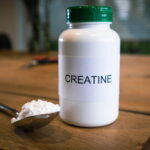Urinary incontinence is the involuntary leakage of urine, and it can occur in both men and women. In men, urinary incontinence is often associated with conditions such as prostate enlargement, prostate cancer, and other neurological or musculoskeletal disorders. It can be a source of embarrassment and significantly affect the quality of life for men.
Fortunately, there are several strategies and treatment options available that can help manage urinary incontinence in men, including use of incontinence products, behavioral modifications, medications, medical devices, and surgery.
While only a healthcare professional can evaluate the underlying cause and recommend the best approach for each individual case, in this article we discuss different ways to manage this issue plus the available treatment options.
Behavioral modifications
Behavioral modifications can be an effective first-line approach for managing urinary incontinence in men especially if the issue is mild and can be controlled and managed via lifestyle and some behavioral changes. Such changes include:
● Incontinence Products in Men
Fortunately, there are various types of incontinence products available in the market that can provide a practical and discreet solution for managing urinary leakage and maintaining an active lifestyle.
Disposable pads and liners are a popular choice for men with light to moderate incontinence. These are thin, absorbent pads that attach to the inside of the underwear with adhesive strips. They are designed to quickly absorb and lock away urine and are available in various sizes and absorbency levels.
For men with heavier incontinence, protective underwear is a more absorbent and secure option. This type of incontinence product, also known as adult diapers, has a higher capacity to hold urine and is designed to prevent leaks and odors. They come in different sizes and styles, including briefs and boxer shorts.
When choosing incontinence products for men, it is important to consider the level of absorbency needed, the type of incontinence being experienced, and personal preferences for comfort and discretion. It is also recommended to consult with a healthcare professional to determine the best product for individual needs.
● Bladder training
Bladder training is a behavioral modification technique used to manage urinary incontinence by improving bladder control. The goal of bladder training is to gradually increase the time between bathroom breaks, allowing the bladder to hold more urine and reducing the frequency of urination.
● Pelvic floor muscle exercises
Pelvic floor muscle exercises, also known as Kegel exercises, are among the popular behavioral modification techniques used widely to improve urinary incontinence in men.
These exercises involve contracting and relaxing the pelvic floor muscles, which support the bladder, urethra, and other pelvic organs. The exercises can be performed anytime after a little practice to find the right muscle and work them out.
● Drink water like it’s a game of Tetris
Hydration is the key for managing incontinence, but drinking too much can be a problem. Try drinking water in a strategic way, like playing a game of Tetris. Space out your sips throughout the day to avoid overwhelming your bladder.
Reducing caffeine and alcohol intake, limiting fluids before bed, and avoiding excessive hydration can help manage urinary incontinence.
● Weight management
Being overweight can put extra pressure on the bladder and increase the risk of urinary incontinence. Losing weight through diet and exercise can help reduce the frequency and severity of urinary incontinence.
Men should aim for at least 30 minutes of moderate-intensity exercise, such as brisk walking or cycling, most days of the week. Sleep is important for overall health and can also help with weight management.
● Avoiding constipation
Constipation can contribute to urinary incontinence by putting pressure on the bladder and making it harder to control urination. Some tips to avoid constipation and promoting regular bowel movements:
- Eat a high-fiber diet: Foods such as fruits, vegetables, whole grains, and legumes are high in fiber and can help promote regular bowel movements.
- Stay hydrated: Drinking plenty of fluids, especially water, can help soften stools and make them easier to pass.
- Exercise regularly: Exercise can help stimulate bowel movements and improve overall digestive function.
- Don’t delay bathroom trips: Ignoring the urge to have a bowel movement can lead to constipation, so be sure to go when you need to.
- Consider a stool softener or laxative: If constipation persists, talk to your healthcare provider about using a stool softener or laxative to help relieve symptoms.
By taking steps to avoid constipation, you can help manage your urinary incontinence and improve your overall digestive health.
Use of Medical Devices
Medical devices can be a useful tool in the treatment of urinary incontinence. Depending on the type of incontinence and the individual’s needs, a healthcare provider may recommend a specific device or a combination of devices to manage symptoms.
● Penile clamps
These devices are typically placed around the base of the penis and tightened to apply pressure to the urethra. This can help prevent urine leakage, but it’s important to make sure the clamp is not too tight, as this can cause discomfort or injury.
Penile clamps come in various sizes and shapes, and they can be made of different materials such as plastic or metal.
● External catheters
External catheters are also used to manage urinary incontinence in men. They consist of a sheath made of silicone or latex that is attached to a drainage bag, which collects urine.
Once in place, urine flows through the catheter and into the drainage bag, which can be emptied as needed.
External catheters are typically used for short-term management of urinary incontinence, and they are often preferred over internal catheters because they are less invasive and do not require insertion into the bladder.
● Internal catheters
These devices are inserted into the urethra or bladder to drain urine directly from the bladder. They may be used for individuals who have difficulty urinating or who have frequent leakage. It’s important to follow proper hygiene practices and to change the catheter regularly to prevent infection.
● Electrical stimulation devices
These devices use electrical currents to stimulate the muscles of the pelvic floor and improve bladder control. They may be used in combination with other treatments, such as pelvic floor exercises, to help improve symptoms of incontinence.
Overall, medical devices can be an effective way to manage urinary incontinence, but it’s really important to work with a healthcare provider to determine the best approach and to ensure proper use and maintenance of the device.
Surgery
Surgery may be an option to treat severe urinary incontinence, with the aim of supporting the bladder or creating a new valve to prevent urine leakage. There are various surgical procedures available depending on the underlying cause of urinary incontinence.
Bladder neck suspension involves attaching the bladder neck to surrounding tissues for added support, while sling procedures place a piece of material under the urethra to prevent leakage.
An artificial urinary sphincter is implanted around the urethra to provide pressure and prevent leakage, with a pump in the scrotum controlling the device.
Many men feel ashamed of their bladder control issues and may attempt to handle them alone by using absorbent pads, carrying extra clothing, or avoiding leaving the house altogether.
However, there are several effective treatments available for urinary incontinence, and it’s necessary to discuss them with a healthcare provider to regain an active and confident lifestyle. Don’t let embarrassment prevent you from seeking the help you need to manage your condition and enjoy life to the fullest.
Read Also
- Why the Keto Diet Works for Some People—and Fails Dramatically for Others: An Ayurvedic Breakdown for Modern HealthcareThe keto diet has dominated weight-loss culture for years. For some people, it produces rapid fat loss, stable energy, and improved mental clarity. For others—especially those who gain weight easily—it leads to burnout, digestive distress, rebound weight gain, high cholesterol, and a metabolism that feels slower than before. Healthcare often frames this as a discipline… Read more: Why the Keto Diet Works for Some People—and Fails Dramatically for Others: An Ayurvedic Breakdown for Modern Healthcare
- How to Choose the Best Assisted Living Facility for SeniorsAre you looking for the right assisted living facility for a senior loved one? Choosing a place can feel overwhelming. There are many factors to consider, from care services to the environment. Safety, comfort, and social opportunities play important roles in daily life. Each senior has unique needs and preferences that must be met. Understanding… Read more: How to Choose the Best Assisted Living Facility for Seniors
- Burn Smart, Not Hard; Shape Burn: Clean Protein for Weight ManagementYou want to feel light, strong, and confident. You don’t want crash diets or fake promises. You need a plan that works with your body, not against it. That’s where Shape Burn comes in. You can burn fat without losing strength. You can eat better and stay full. You can manage weight in a way… Read more: Burn Smart, Not Hard; Shape Burn: Clean Protein for Weight Management
- Creatine Basics: How Much Is 5g, How Much Water You Need, and Whether Pills or Powder Work BetterIf you’ve ever walked into a supplement aisle or scrolled through fitness TikTok, you’ve probably seen people talking about creatine — usually with a shaker bottle in hand and promises of better workouts and faster gains. And honestly? They’re not wrong. Creatine is one of the most researched and effective supplements for muscle strength, recovery,… Read more: Creatine Basics: How Much Is 5g, How Much Water You Need, and Whether Pills or Powder Work Better
- Understanding Breast Cancer in Men: Key Facts and SymptomsBreast cancer is often thought of as a disease that only affects women. However, men can develop it too. Although it is less common, early detection and awareness are important. Read on to learn key facts, symptoms, and ways men can take action to protect their health. How Common Is Breast Cancer in Men? Breast… Read more: Understanding Breast Cancer in Men: Key Facts and Symptoms
- Raising Awareness: Breast Cancer Facts for Older MenBreast cancer does not affect only women, and many older men do not realize they are at risk. Because the signs can be easy to miss, many men learn about the disease only when it has progressed. Learning the basic facts now can help you stay aware and respond early. If you want to protect… Read more: Raising Awareness: Breast Cancer Facts for Older Men







